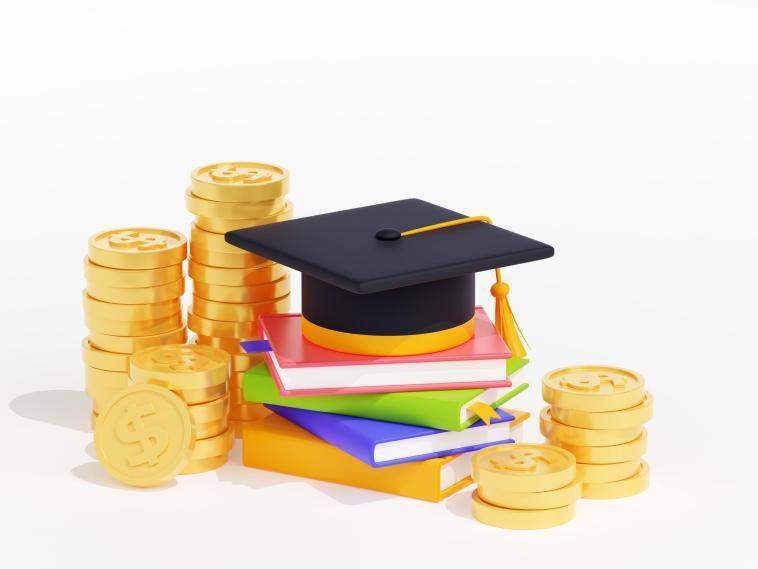One of the best investments a student can make is to take out a student loan. It helps them in a variety of ways, including allowing them to get the education they need to succeed in their chosen profession. However, there are a number of things to consider when it comes to taking out a student loan. These factors include interest rates, forgiveness, and direct loan consolidation.
Federal vs private
A federal student loan and a private student loan are both ways to finance your college education. They offer different features, and you should choose the loan that best suits your needs.
Federal student loans offer fixed interest rates, and they don’t require any credit qualification. However, these loans do not have the same repayment options as a private loan. In addition, they often require a cosigner, which may not be desirable for everyone.
Private student loans are offered by private lenders, such as banks and credit unions. These types of loans have a variety of benefits, from competitive fixed rates to deferment options. You should be aware that some private student loan lenders will only allow you to make payments if you’re in school.
The amount you can borrow for your tuition and living expenses may be higher than your federal student loan limits. This can help you fill the gaps left by your federal student loan. However, you’ll have to pay interest on the funds you don’t use.
There are also various options available for repaying your loan, such as deferment and forbearance. Forbearance allows you to temporarily suspend payments during a hardship. It can be helpful if you’re facing a job loss, but you will have to pay back the loan even if you get a new job.
In addition, there are more benefits to a private loan than a federal loan. You can take advantage of the deferment options available to you, and you can refinance your existing student loan with a private lender.
One of the best features of a private loan is that it can be applied for at any time. You can also use your private loan to cover a gap in your financial aid package.
Private student loans have a large pool of competitors, so you can always try to find the best loan for you. However, be sure to do your homework, and compare several loan offers before you sign on the dotted line. If you don’t take the time to do your research, you could end up with a loan that doesn’t meet your financial goals.
Interest rates
Student loans are designed to help individuals achieve their higher education goals. But borrowers must understand how interest rates work, how to keep their costs down, and what options are available.
Federal student loans are typically less expensive than private loans. However, both types of loans have variable or fixed interest rates.
Interest rates are set annually by the federal government. They are determined by the 10-year Treasury note yield. In recent months, the 10-year Treasury note has gone up to three percent, which has pushed up student loan rates.
The federal government sets the rates for both undergraduate and graduate students. Both types of loans are based on the 10-year Treasury note, which is auctioned in May or August. Those who borrow a federal student loan usually don’t have to fill out a credit check. There are also other factors that may influence the rates.
Typically, the lower the rate, the more borrowing will be done. On the other hand, the higher the rate, the more payments will be made. Higher monthly payments are linked to higher default rates. For example, a person who takes out a five-year, ten-year, or twenty-year loan might pay an extra $2,001, $1,001, or $1,500, respectively.
Interest rates are set by the United States Department of Education. Borrowers who took out a loan before July 1 will not be affected by the new rate increase. All loans issued after July 1, 2018 will be subject to the increased rates.
Graduate students typically have higher interest rates than undergraduates. However, this does not affect the amount they are able to borrow. Direct PLUS loans are available to parents who want to help their children pay for college. Plus, the average annual tuition for a four-year public college is around $23,890.
Undergraduates can take out a maximum of $5,500 in unsubsidized loans. This allows them to make a payment of $55 per month. However, most undergraduates do not have a credit history. A loan calculator can help calculate the total debt that you will be responsible for.
Forgiveness
The forgiveness of student loan debt can be a helpful way for people to erase the burden of their education costs. However, this can also raise a variety of questions. Depending on the specifics of your situation, you may need to consult a lender before deciding on a course of action.
The forgiven amount is not taxable in most states. It could be taxed in others though. Many states do not follow the federal exemption.
Currently, there are three ways to receive the forgiveness of student loan debt. One of these is through an income-driven repayment plan (IDR). This plan caps your monthly payments at 20% of your discretionary income.
Another option is a program called Public Service Loan Forgiveness. Under this program, your federal student loans will be forgiven after you make 120 qualifying monthly payments. If you choose this option, you will need to apply for it by October 31, 2022.
Several other types of loan forgiveness may be taxable. Some lenders have individual arrangements for borrowers with severe income reductions.
For instance, the American Rescue Plan Act of 2021 exempts debt forgiveness from federal taxation. As a result, billions of dollars in student loan forgiveness could be tax-free.
Although this may sound like a good idea, it’s important to understand how the IRS views the forgiveness of student loan debt. You may want to check with your lender to see if you qualify for the program.
In some cases, the IRS has indicated that the forgiveness of student loan debt is not a tax-free event. There are several other states that do not follow the federal exemption, meaning that you may have to pay taxes on the forgiven amount.
Several media figures have cited the forgiveness of student loan debt as a tax-free event, but this is not the case. The most effective student loan forgiveness plan will be the one that provides the best possible relief for your situation.
Until a court rules, however, the forgiveness of student loan debt is on hold. A judge recently heard arguments for and against the program.
Direct loan consolidation
If you have several federal student loans, you may want to consider consolidating them into a single, federal loan. This option can help you simplify repayment and keep payments affordable. However, the process isn’t always easy and you have to make certain considerations before you apply.
Student loan consolidation isn’t always the best choice. Although it can lower your monthly payment, you may end up paying more in interest over the lifetime of your loan. In addition, you can lose access to some forgiveness options.
The first thing to consider is whether your old loans qualify for consolidation. If they do, you’ll need to choose an income-driven repayment plan to pay back your loan. You can also look for a lower interest rate.
You don’t have to have good credit to qualify for a consolidation loan. Several different types of income-driven repayment plans are available. Some offer forgiveness for qualifying borrowers, while others allow you to cap your payments at a percentage of your discretionary income.
If you are considering federal direct consolidation, the Department of Education will work with you to find a repayment plan that meets your needs. For example, if you have a high-interest Parent PLUS loan, you might be able to secure a lower interest rate.
You will also need to decide whether you’re comfortable with the longer term of your new loan. Typically, a longer term means you’ll have a lower monthly payment, but the interest on your loan will accumulate much faster and cost you more over its lifetime.
When you apply for a Direct Student Loan Consolidation, you’ll be notified of your new interest rate. It will be based on a weighted average of your existing rates. Your new rate will be rounded to the nearest eighth of a percent.
You will also have to select a repayment plan for your new loan. While you can choose between the different options, you’ll need to do some math to figure out which one will work best for you.
The Direct Student Loan Consolidation website will also let you choose between federal and private loans, as long as they are eligible for consolidation. There are no fees to participate in this program, and you’ll be able to use your FAFSA pin number.



